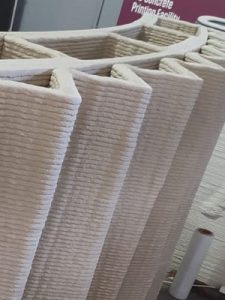Texas A&M gets $3.74M for 3D-printed hempcrete buildings research
[ad_1]

A approach from Texas A&M College researchers to 3D print new resilient properties working with hempcrete has been given a $3.74 million grant from the U.S. Division of Strength (DOE).
Dr. Petros Sideris, assistant professor in the Zachry Office of Civil and Environmental Engineering, will lead the undertaking as principal investigator to build residential and prospective business building types. His crew is made up of assistant professor Dr. Maria Koliou, department head and professor Dr. Zachary Grasley, and professor Dr. Anand Puppala from the office, along with associate professor Dr. Manish Dixit and professor Dr. Wei Yan from the Texas A&M University of Architecture.
Hempcrete is produced by mixing hemp powder, fibers, or shives with lime and h2o, producing a lightweight, eco-friendly creating substance.
“While generation of standard construction components this kind of as concrete calls for large amounts of power and releases large quantities of CO2 (carbon dioxide), hempcrete is a internet-carbon-negative product, which can give significant environmental advantages,” says Sideris.
As aspect of the task, setting up patterns will be printable and established to realize structural and electrical power functionality which will comply with modern layout codes. Sideris says electronic designs of printable hempcrete buildings will aid adoption by the building industry.
The funding for the challenge is section of DOE’s Harnessing Emissions into Structures Using Inputs from the Environment (HESTIA) method, which prioritizes conquering obstacles related with carbon-storing buildings—including scarce, high priced, and geographically constrained building elements. The software aims to raise the whole amount of money of carbon saved in buildings to build carbon sinks, which absorb more carbon from the atmosphere than produced for the duration of construction.
[ad_2]
Resource hyperlink







